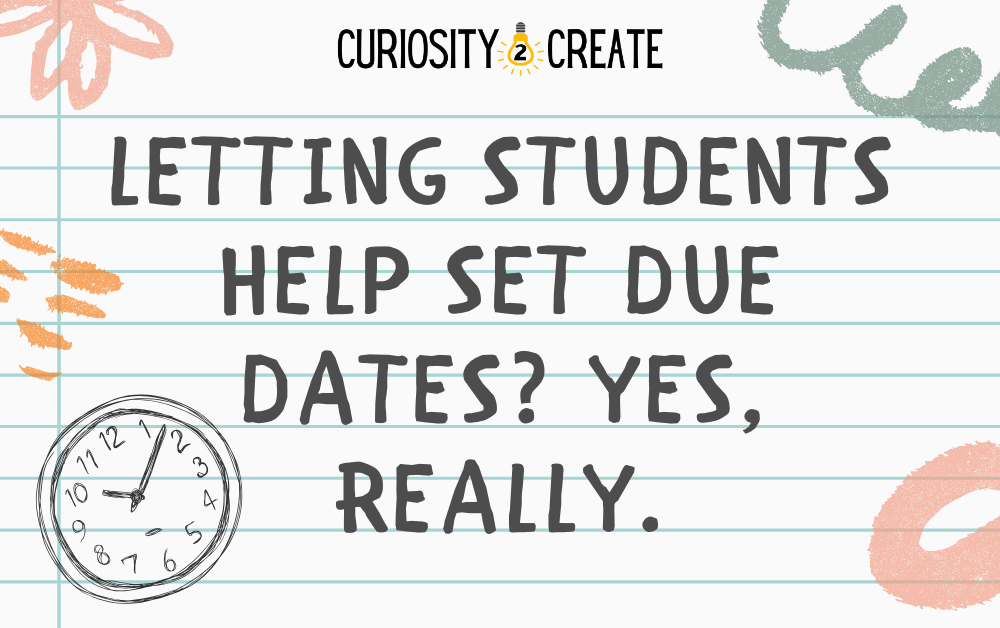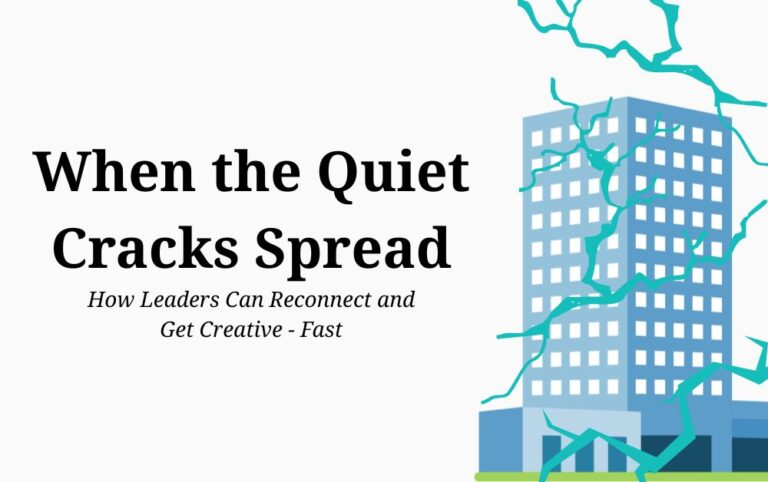
Knee-Deep Thinking: Why Staying Shallow Holds Us Back
Safe feels easy, but the real growth happens when we wade deeper.


At first, it sounds like a recipe for chaos: giving students a say in their own due dates? Really? Won’t they just push everything to the last possible moment? Or worse, never turn anything in at all?
It’s the opposite.
Giving students a voice in due dates can be a classroom game-changer. It doesn’t mean turning over all control or throwing out structure. It means shifting from compliance to collaboration. It means showing students that they are trusted, respected, and capable of managing real responsibilities. And that shift in mindset can transform your classroom culture in ways that benefit everyone, students and teachers alike.

Let’s start with the obvious question: why would this work?
When students help set a deadline, they’re not just being given freedom. They’re being handed responsibility. That change from being told what to do, to having a say in how it gets done invites a new level of ownership. The deadline becomes theirs. And people are far more likely to follow through on something they helped create.
This isn’t just a classroom theory. It’s human psychology. When we feel a sense of choice and agency, our motivation increases. Instead of “I have to finish this,” students begin to think, “I said I’d finish this.” That subtle shift matters.
And here’s the beautiful part: when you trust students with more responsibility, many of them rise to the challenge.
Of course, this isn’t about making every assignment optional or allowing open deadlines forever. The key is structure with flexibility.
Try it with one assignment first. Present the task, outline your expectations, and then ask, “When do you think you can realistically have this done?” Maybe even offer a range “Would Friday or Monday work better for you?” Or ask them to submit a proposed timeline with a brief explanation of why that date works.
Build in guidance. Teach them how to look ahead at their calendar, other deadlines, sports schedules, or upcoming events. Walk through how to balance workload and time. These are executive functioning skills that go far beyond the assignment in front of them.
By modeling this process with them, you’re teaching valuable planning and decision-making. And you’re reinforcing that deadlines don’t have to be something that happen to them, they can be something they have a hand in.

One of the most surprising benefits of collaborative due dates is that it fosters more open and honest communication. Students start to share what’s on their plate instead of making excuses after the fact.
You might hear:
These are real-life planning conversations. And they help students learn how to advocate for themselves in respectful, proactive ways. Plus, they reduce the need for late-night emails, frantic explanations, or last-minute meltdowns.
Instead of students feeling trapped or overwhelmed, they begin to feel empowered to manage their time, and they learn how to communicate that with you.
Letting students help determine due dates teaches more than academic responsibility. It builds long-term life skills that serve them far beyond your classroom.
Think about what’s really being learned here:
In other words, you’re preparing them not just to complete your assignment, but to meet future expectations, in school, in work, and in life, with confidence and clarity.

So, how do you make this work in practice? Here are a few easy ways to start:
Instead of assigning one hard deadline, give students a 2–3 day window. Let them choose within that window when they’ll submit the work. For group projects, this can also spark conversations around coordination and pacing.
Example: “Your science lab report is due sometime between Wednesday and Friday. Choose the day that fits best with your workload this week and make sure it’s in by 3 p.m. that day.”
For larger assignments or projects, offer two possible due dates and have the class vote. The date with the most votes wins.
This keeps things democratic while also teaching compromise and consensus. If students helped choose it, they’re more likely to stick with it.
For older students or more independent learners, allow them to propose their own due date. Have them submit a quick plan:
This is especially helpful in project-based learning, long-term research assignments, or creative writing work.
One way to keep things on track is to build in checkpoints. If the final due date is flexible, have a midway progress check that’s consistent for everyone. This gives students structure while still allowing them autonomy.
Example: “Choose your final presentation date, but all outlines must be submitted by Thursday for feedback.”
At the start of a unit or month, invite students to help build the assignment calendar. Plot out major assignments, test dates, and personal commitments. This helps them visualize what’s coming and reduces the sense of being blindsided.
It also helps you see when your plans might be landing during the week of four other major events.
If all of this sounds like it’s only for the benefit of students—think again. Flexible due dates can be a huge help for teachers, too.
When due dates are staggered:
And perhaps most importantly, you spend less time chasing down late work or deciphering vague excuses. Because when students have ownership and clarity, they’re more likely to meet their own expectations.

Now, will every student use this responsibly? Of course, not at first. Just like any skill, time management takes practice. Some students may underestimate the time they need. Others may forget what they agreed to. That’s okay.
Use it as a teachable moment. Ask:
It’s not about perfect compliance. It’s about learning how to reflect, adjust, and try again.
And if a student needs more structure? Provide it. You can always step in and say, “I think this time we’ll set a deadline together.” Flexibility doesn’t mean a lack of boundaries. It means adapting based on need, and teaching students how to eventually do the same for themselves.

Letting students help set due dates isn’t about losing control. It’s about creating more meaningful, respectful learning experiences.
It helps shift the classroom culture from one of compliance to one of collaboration. From “I said so” to “Let’s figure this out together.” And that shift, toward autonomy, responsibility, and trust, can create the kind of classroom where students thrive.
When we teach students how to manage time, we teach them how to manage themselves. And when students see that their input matters, they show up differently. They engage more fully. They take more ownership. And, yes, they still meet the deadlines.
So, the next time you’re planning an assignment, consider this: What happens if you ask your students when they think they can finish it?
You might just be surprised by the responsibility they’re ready to take on, when we give them the chance.
I’m Beth Slazak, the Vice-President of Curiosity 2 Create, a nonprofit organization offering professional development and coaching for educators and administrators.
We use the CREATE Method, an ESSA Level 4 backed method that reduces chronic absenteeism, improves student engagement, and increases student academic performance using our CREATE Method model. Schedule a call here to learn more about how Curiosity 2 Create and the CREATE Method can help you and your school today.
Share Post:

Safe feels easy, but the real growth happens when we wade deeper.

I can still picture it—walking through my northwest Chicago neighborhood with friends,

A lighthouse doesn’t shine just for decoration; it exists because lives depend